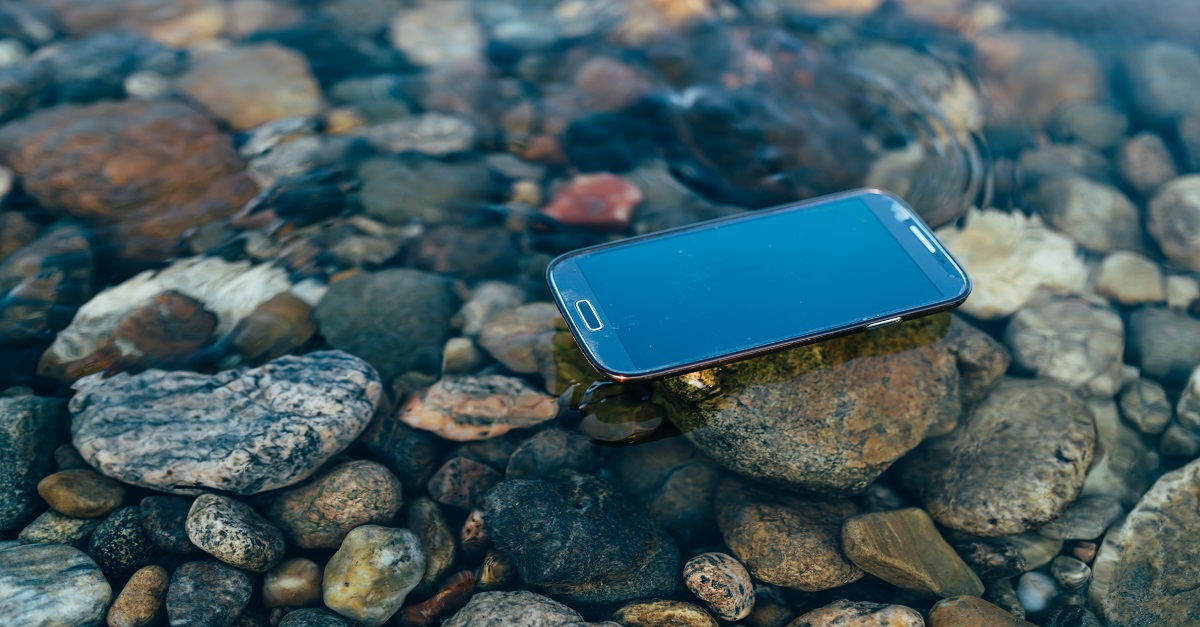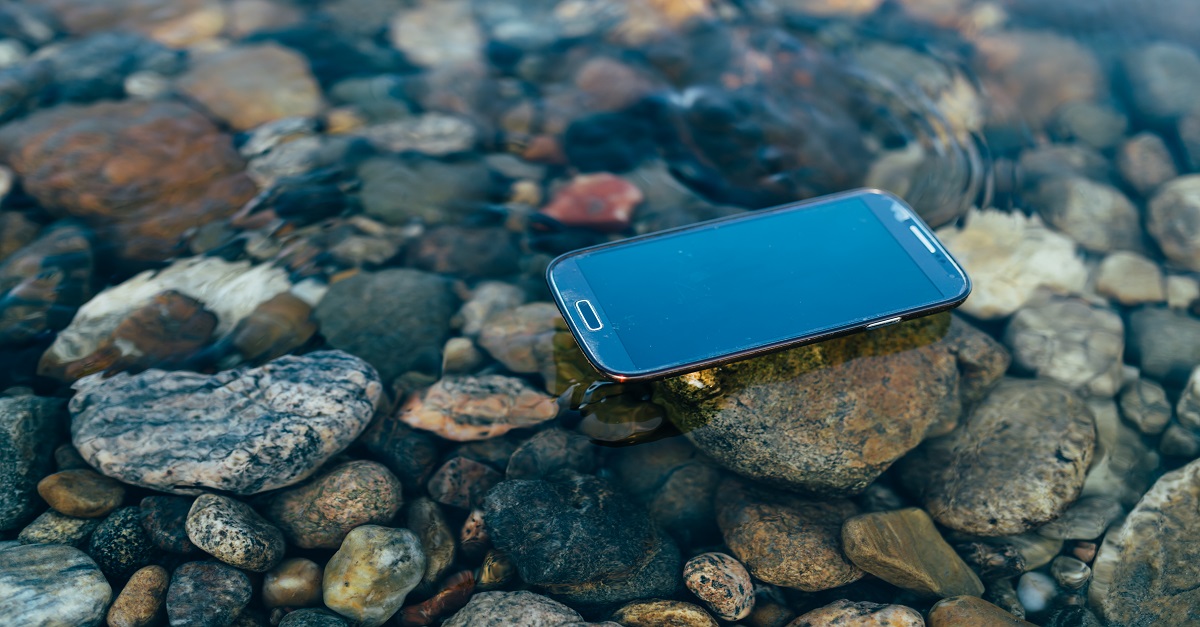
We’ve had meandering phones post selfies onto Facebook of themselves locked up in a prison cell, we’ve seen a guy who pretended he was a woman in order to get his phone back from the online dating-wannabe phone finder, and we’ve seen selfies from random guys who pick them up on the beach.
But eat your gadgety little heart out, lost phones everywhere, because we now have the adventures of a phone that went rafting, took a refreshing dip when it plopped overboard, was fished out of the water by Calgary firefighters, and lovingly adopted into their ranks.
The firefighters obviously took quite a liking to the soggy Samsung Galaxy S4 – it even got to drive their fire truck, as its subsequent Facebook selfies showed.
After finding it in the Bow River in Canada’s Alberta province, they fished it out and adopted it, naming it Hector Sanchez.
But really, it was more like foster care than a permanent adoption.
As the Calgary Sun tells it, Nathan Buhler, of Calgary, had written off the phone as lost for good after it went missing while he was rafting the Bow River on 2 August.
The two firefighters who found Hector had been paddle-boarding to work.
In spite of the phone having marinaded in the river for more than two weeks, they managed to turn it on.
When they did, they found that it was still logged on to Buhler’s Facebook account.
So they posted a status update, letting Buhler know that his phone was happy, healthy and undrowned, hanging out with the station’s crew. They added a photo of the crew, to show Buhler the phone’s adopted parents.
But before Buhler’s girlfriend gave him a heads-up about the update and before he came by to collect the phone, the firefighters treated it to a few adventures.
Facebook status updates showed pictures of Hector strapped into the driver’s seat of a fire engine, assisting with hoses, prepping lunch for the crew, pumping iron in the workout room, and playing table tennis.
Buhler eventually dropped by the fire station to pick up his phone, but nobody was around.
So he said “Hello, I’m looking for Hector Sanchez,” and that did the trick.
He just had time to snap a selfie with the friendly firefighters before an alarm went off and they scattered, Buhler said, off to battle blazes or, who knows, maybe to gallantly gather up more gadgets.
I hate to throw cold water on a good phone-reunion story, but I have to ask – why wasn’t that phone passcode-protected?
Because Buhler didn’t have a passcode on the phone, the firefighters were able to (in the most well-meaning and fun-spirited way, of course!) utterly breach his privacy and post things to his Facebook page.
After all, it’s the rare lost phone that’s fortunate enough to get found by friendly public servants who just want to have fun and reunite an owner with his or her lost, pricey device.
That’s why passcode-protecting your phone is so important.
Not to cast aspersions on the Calgary firefighters, mind you, but anybody who finds a lost phone that lacks a passcode can check out anything and everything, from nude selfies to contact information for your friends.
You don’t want random strangers to be able to text your friends or respond to online dating ads using your account.
To avoid things like that, secure your phone using a strong passcode. It’s also a good idea to make sure your data is encrpyted. You can find more about passcodes, encryption and more in our article Why you shouldn’t worry about privacy and security.
Also, here are 10 tips for securing your phone.
Image of lost smartphone floating on water courtesy of Shutterstock.com

Wolf
I worked in public safety in a college for two years and saw about 200 mobiles that were found somewhere on campus during that time. Those that didn’t have a passcode could be united with their owners in a matter of minutes. Those with a passcode had to wait for their owners to come to the station and ask for it. Very few did. Most ended up in a box and were discarded about six months later.
Chris
That’s why my lockscreen has my full name and place of employment (it’s a company-owned phone) scrolling across the top of it. Surely that’s a healthy compromise?
Unless, of course, it gets rebooted. Then only the non-customizable encryption lockscreen is visible.
Andrew Ludgate
Indeed; I’ve got a “EmailMeIfFound@” email address on my lock screen for just this purpose. If the lock screen won’t come up, then the contact app wouldn’t come up anyway.
Another alternative, I guess, would be to engrave such an address into the actual case.
w0rdXX
If it’s an iPhone (at least the 4s version) – simply hold down the button until the microphone pops up and ask “who am i”? It will display the owner’s contact info. This works even if the phone is passcode-protected.
Victor Pereira
Very interesting story, I agree with the passcode, however I must admit that the chances of finding the phone with passcode were nearly non-existant. For that matter, some phones allow custom messages when you activate “find my phone” or some similar service.
aheneghana
1 in ? 100 000 000 cases say . Worth sharing though – confirms my choice
Robert Stoneking
would recommend a simple contact.txt file with at least an e-mail on any removable media you have in the phone if passworded or an email inside the battery cover so you have a way to get it back
Anonymous
Buhler eventually dropped by the fire station to pick up his phone, but nobody was around.
So he said “Hello, I’m looking for Hector Sanchez,” and that did the trick.
He just had time to snap a selfie with the friendly firefighters before an alarm went off and they scattered, Buhler said, off to battle blazes or, who knows, maybe to gallantly gather up more gadgets.
So was nobody around? Or were they? Is this a true story???
sctv
So he said “Hello, I’m looking for Hector Sanchez,” and that did the trick.